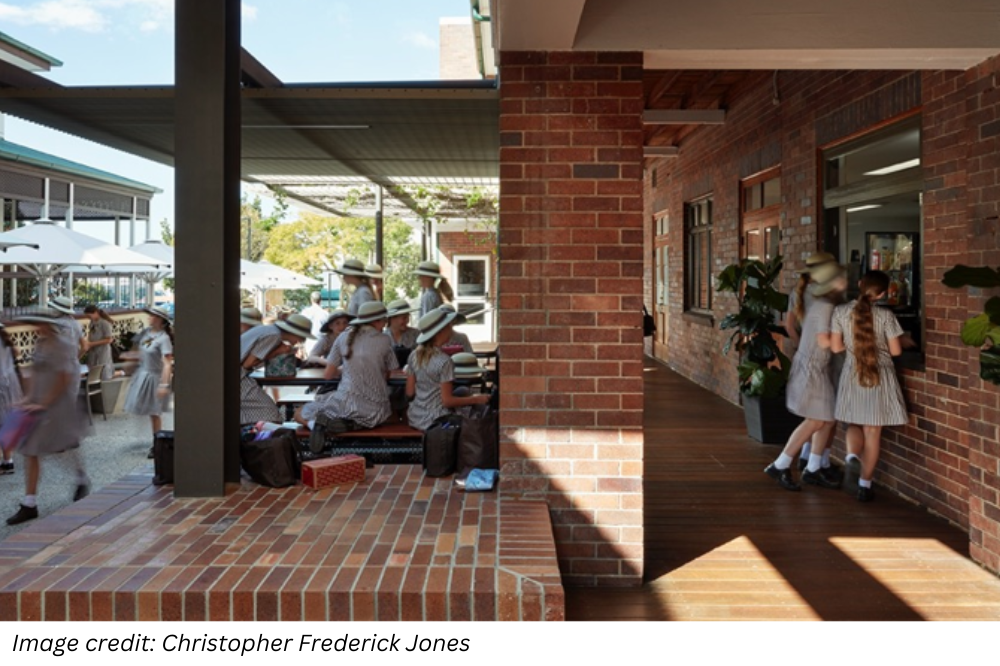
Construction tender prices in Australia have escalated by between 35-45% since 2020, according to a report published last year by Steel Wrobel Quantity Surveyors.
Indeed, rising construction costs have forced many schools to put projects on hold and face decision paralysis. But some experts warn inaction can be immensely costly.
Michael Christensen, director at m3architecture, has 25 years of experience in education master planning and design and has seen several economic cycles across his three decades of practice.
“Delaying projects may lead to further expense down the track. Tender prices have corrected to align with the cost of building materials, but they are unlikely to drop,” Christensen told The Educator.
Christensen pointed out that the minimum cost of delaying a project priced at $10m today is approximately $50,000 per month, based on an escalation rate of 6% per annum.
“To put this into perspective, at a minimum this equates to 200 new student chairs, 50 new projectors or 40 large scale interactive touch screens - per month. Over a year, these same costs would equate to approximately six new members of staff.”
Christensen's view is supported by quantity surveyor and Steele Wrobel director, Ben Foster, who has more than 30 years' experience providing cost management services. He says that historically, a rapid spike in costs tends to level out and then continue to rise.
“The rate of escalation looks to be moderating, but even at normal pace we would expect it to average 4.2%. Labour scarcity and project volume will continue to impact on the market in 2023,” Foster said, noting that approvals in the education sector are trending upwards.
With market volume having the biggest overarching impact on the cost and timing of construction, Foster and Christensen say it is critical to get jobs scheduled sooner rather than later.
“There are major engineering and infrastructure works in the pipeline across the country,” Christensen said.
“In Queensland, we have cross rail and a number of very large healthcare projects and further along it will be the Olympics. Once the contracts for big jobs are signed, there's increased competition for labour and materials and you'll end up paying a premium.”
Strategies to assist in decision making
Despite unprecedented cost escalation over the past two years, it will never be cheaper to build than it is right now, and inaction costs even more. Tough decisions are needed. The following strategies will assist with moving ahead and staying on course.
Communicate: Alert all stakeholders to the costs of indecision and changes and to the importance of timely decisions.
Amalgamate stakeholder groups: Small, empowered groups make decisions more quickly than larger groups with multi-layered approvals processes. Create a new project control group with the smallest number of stakeholders. It could be as simple as formalising a group with the principal and a member of the Board and empowering them with decision-making.
Stay informed on cost: Obtain regular updates on cost estimates for all aspects of a proposed project at every stage, and/or at 3 monthly intervals if delays are being experienced. These updates should include all project costs, including furniture, IT, window coverings, infrastructure services, approvals costs and fees.
Allow for contingencies: Continue to allow for reasonable contingencies in your pricing as the design develops. The unexpected will arise, and cost escalation is never a problem isolated to one day.
Make decisions and be flexible: Make tough decisions early and be flexible. For example, it may be possible to create spaces that allow for multiple uses and teaching opportunities rather than building only specialist spaces. Keep an open mind. Recalibrating expectations is vital for all.
Commit to your masterplan: Building outside the remit of your master plan may save you money today but will cost you tomorrow. For example, don’t under-develop a part of your site with low scale buildings when you know that it should take taller, more dense development later.
Avoid scope creep: If the primary need is for GLA’s, don't add an upgrade to the gym unless you can find more funds. If something must be added to a current project, decide what to remove or where the money will be found before committing.
Don't compress design and documentation time frames: Good design will ensure you are getting the most value from your investment. High levels of documentation provide certainty to clients and contractors alike, reducing risk, and vital to obtaining tight tender results and competitive pricing whilst minimising costly variations and delays later.


